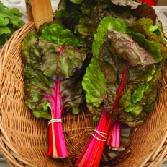-
CATEGORY ::
- All Seeds /
- All Ground Cover Seeds /
- All Sedum Seeds
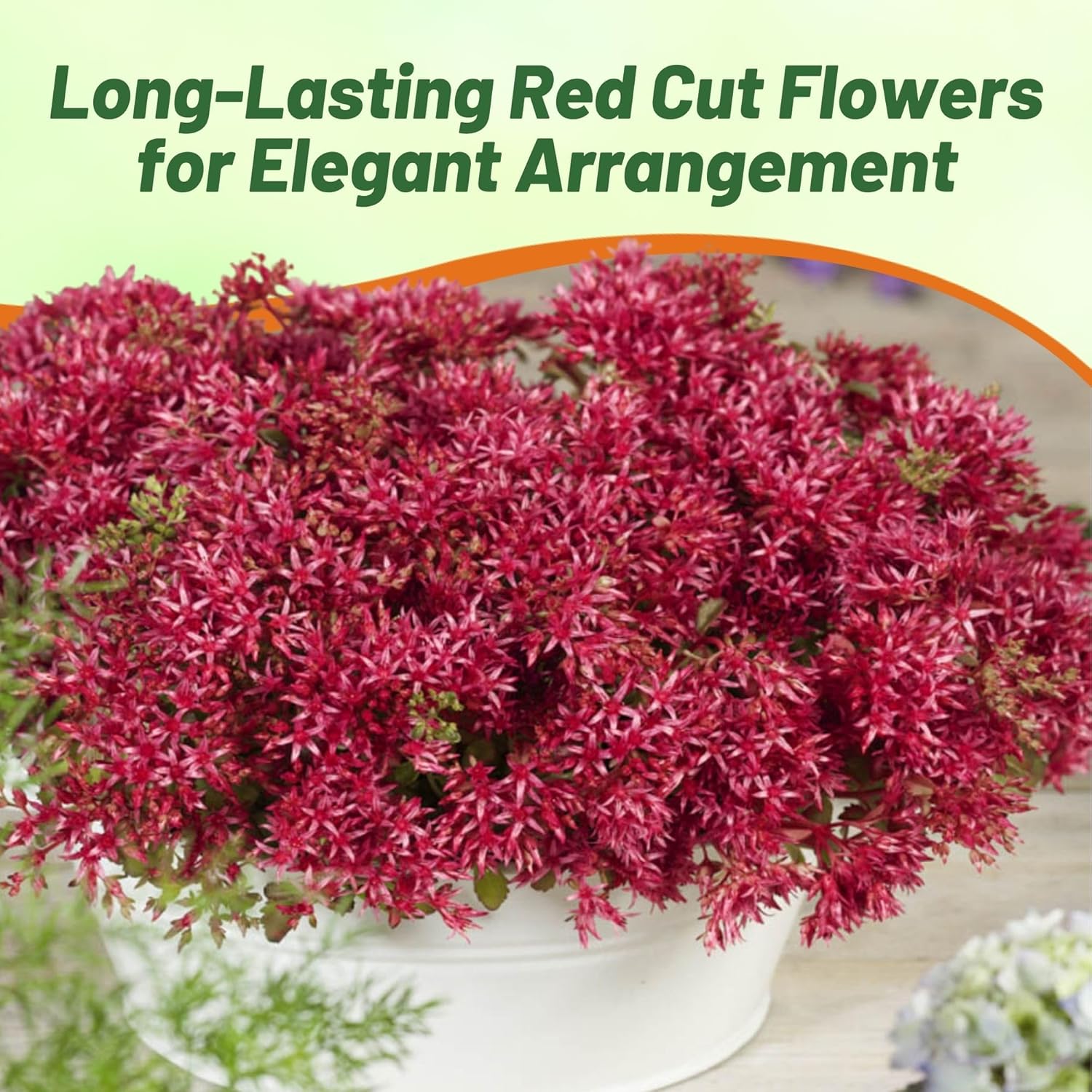


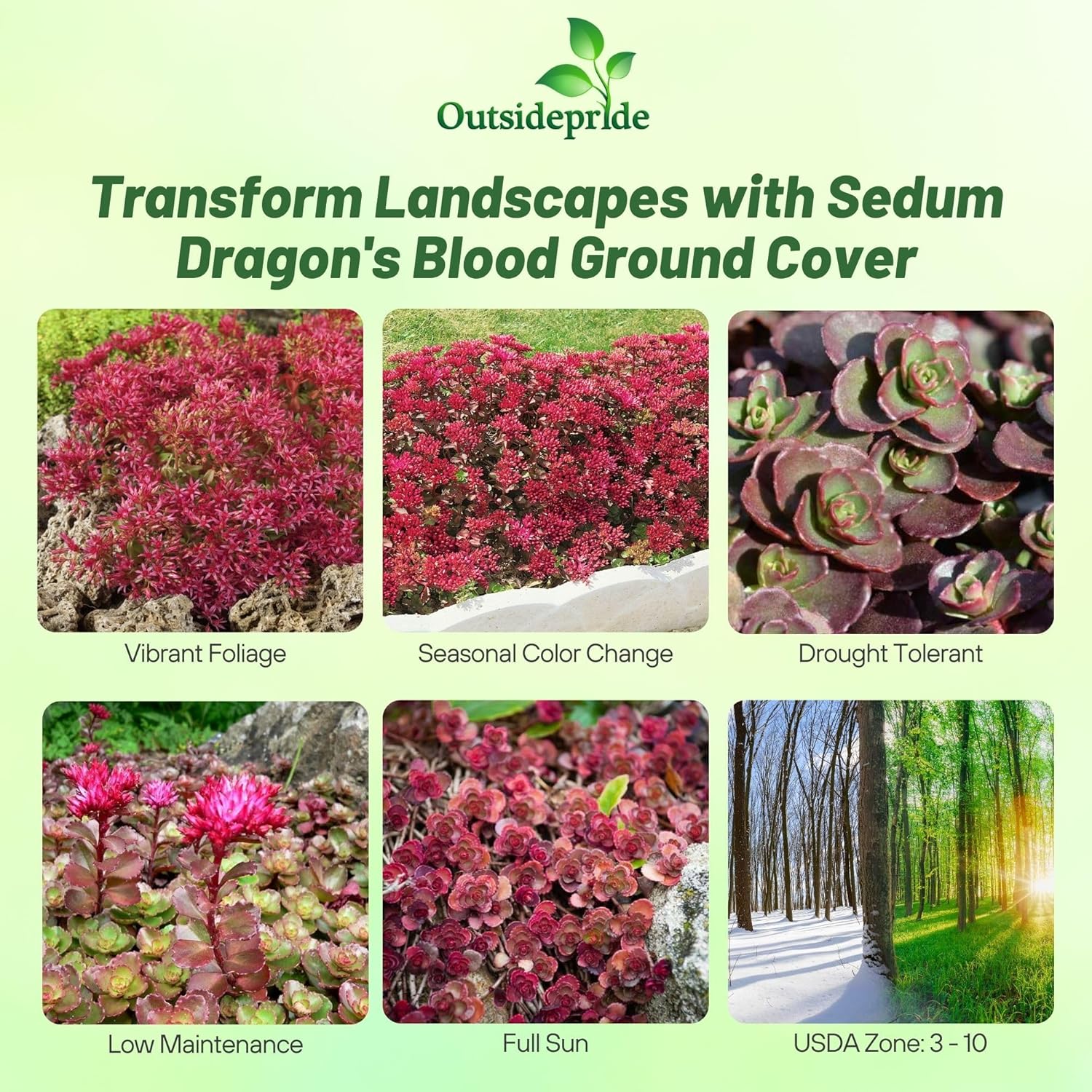
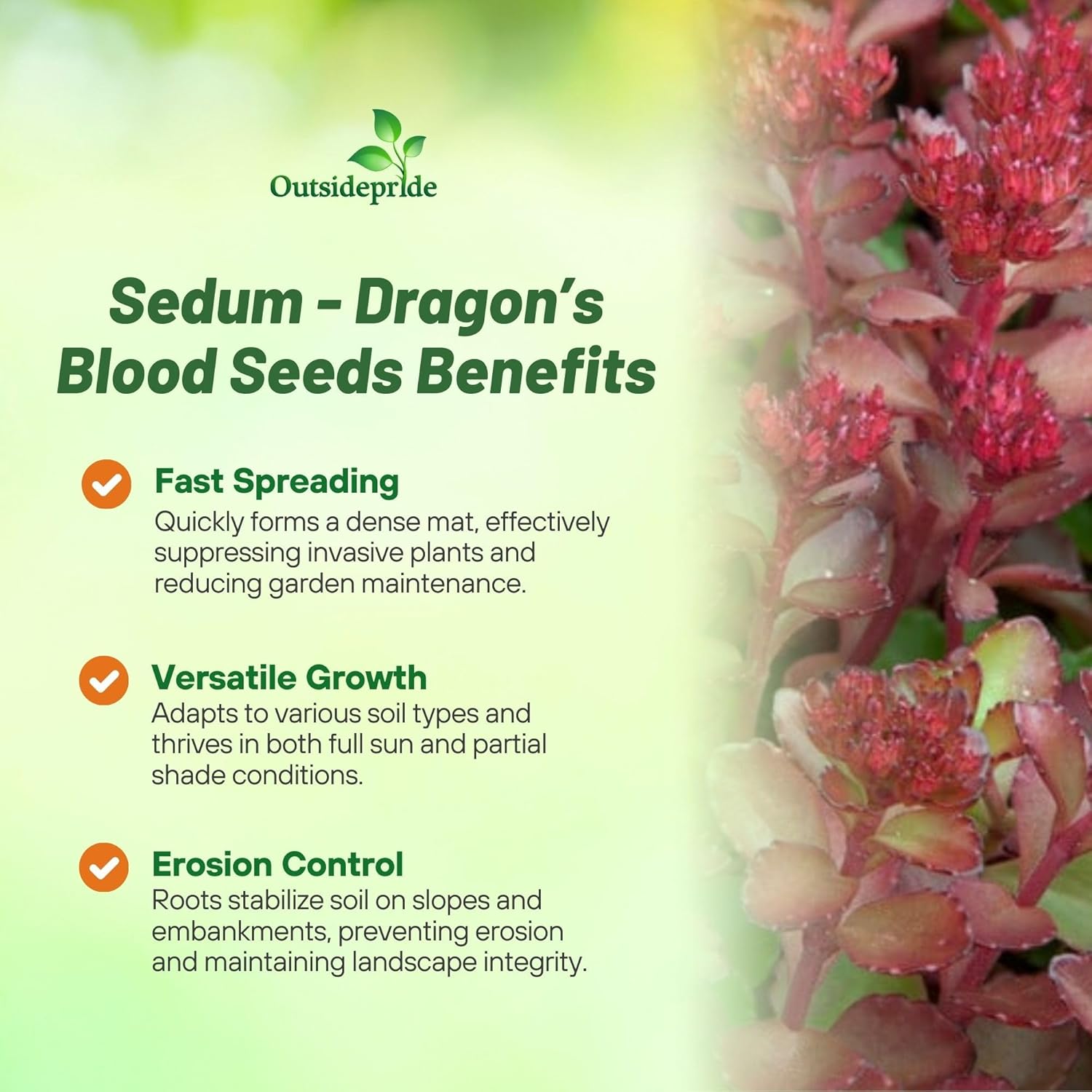
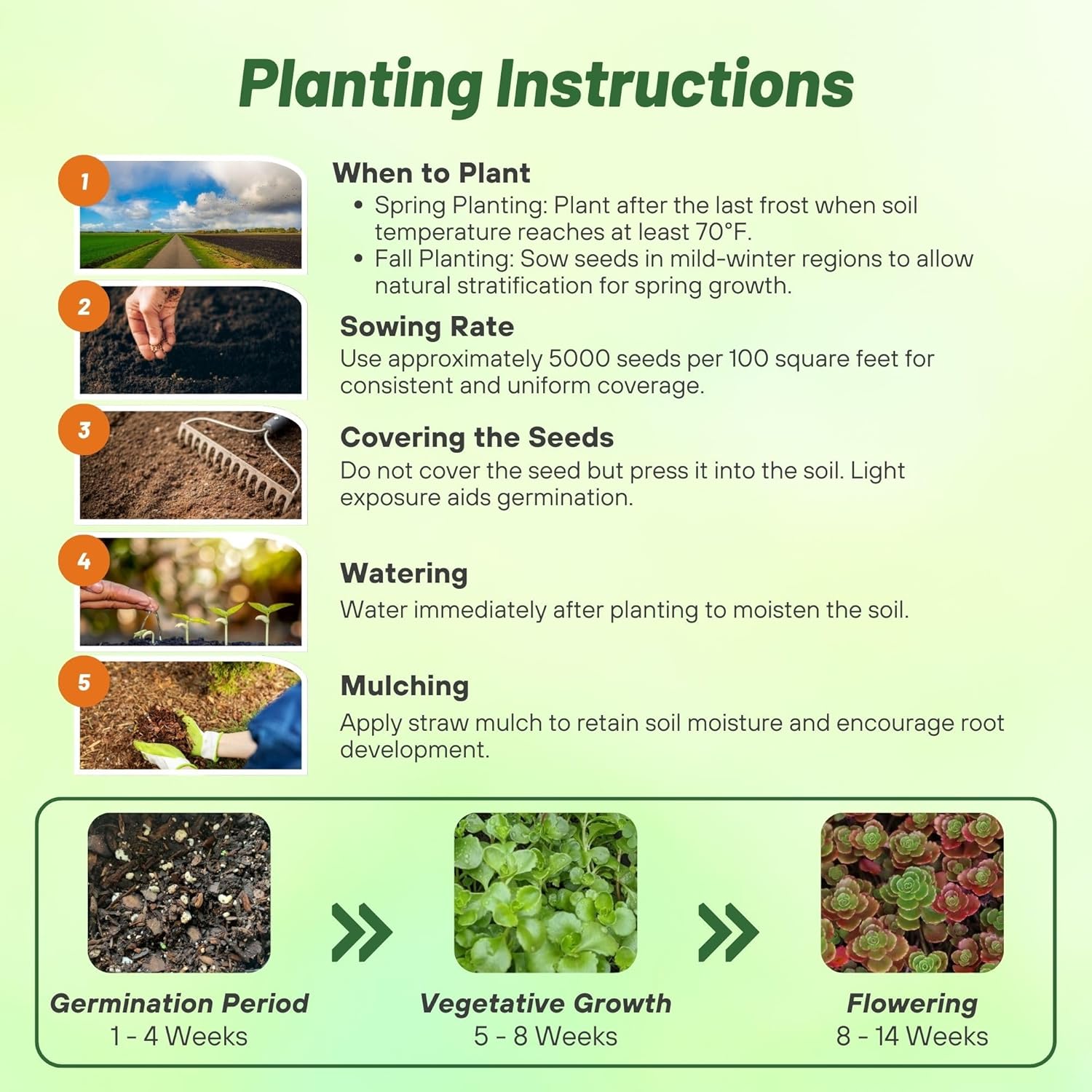
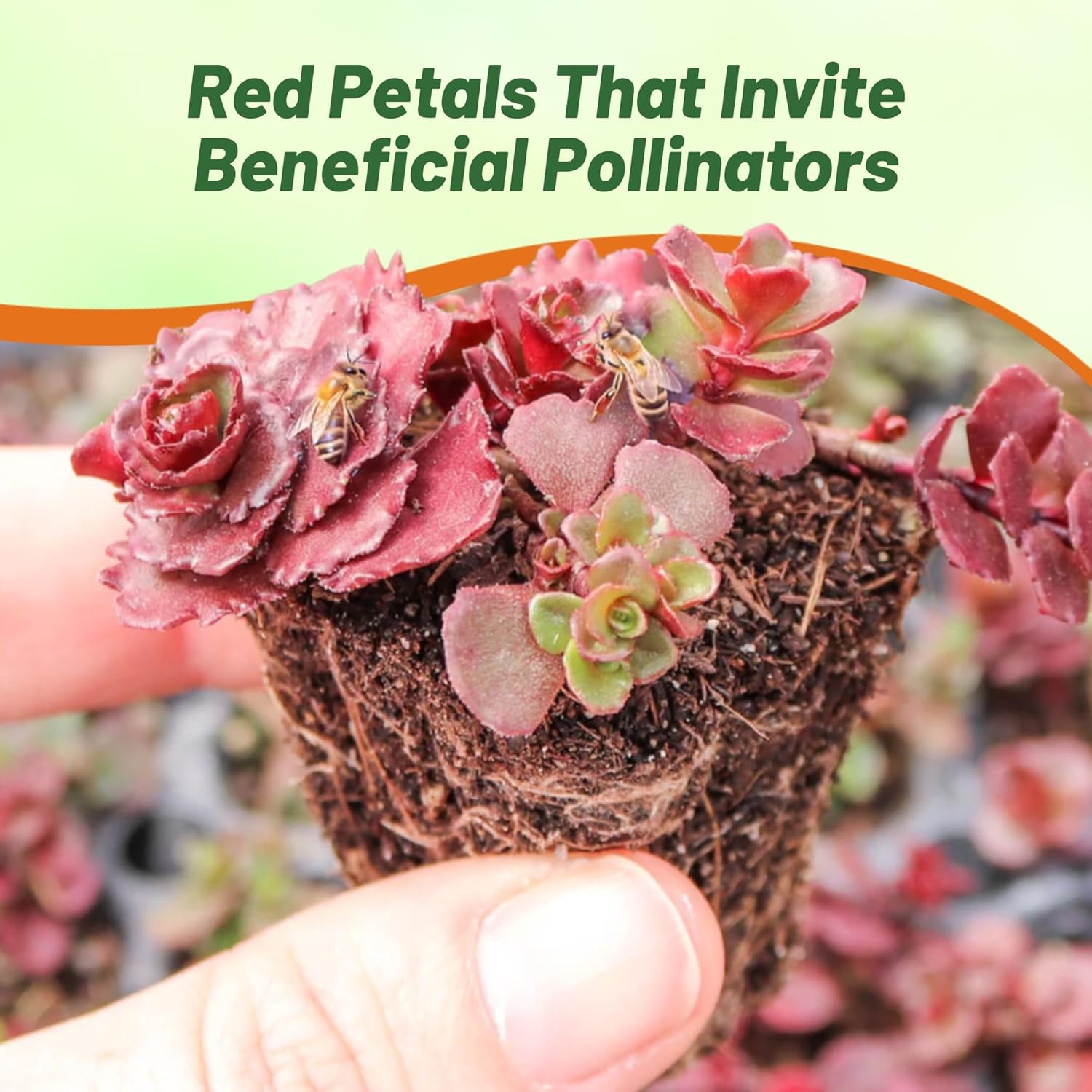

Sedum Dragon's Blood Seeds
SEASON
Perennial
USDA ZONES
3 - 10
HEIGHT
3 - 5 inches
WIDTH
12 - 15 inches
BLOOM SEASON
Summer
BLOOM COLOR
Crimson red
ENVIRONMENT
Full sun
DEER RESISTANT
Yes
SOIL TYPE
Well-drained, gritty, pH 5.8 - 6.8
SEASON
Perennial
USDA ZONES
4 - 8
HEIGHT
2 - 3 inches
BLOOM SEASON
Summer
BLOOM COLOR
Golden yellow
ENVIRONMENT
Full sun to partial shade
FOOT TRAFFIC
Light
DEER RESISTANT
Yes
SOIL TYPE
Well-drained, pH 6.8 - 7.2
SEASON
Perennial
USDA ZONES
5 - 9
HEIGHT
4 - 6 inches
WIDTH
12 - 15 inches
BLOOM SEASON
Summer and fall
BLOOM COLOR
Rose pink
ENVIRONMENT
Full sun
SOIL TYPE
Well-drained, gritty, pH 5.8 - 6.8
DEER RESISTANT
Yes
SEASON
Perennial
USDA ZONES
3 - 10
HEIGHT
8 - 12 inches
BLOOM SEASON
Early Spring to late Winter
BLOOM COLOR
Mixture
ENVIRONMENT
Full sun
SOIL TYPER
Drier soils preferred, but always well drained
DEER RESISTANT
Yes
SEASON
Perennial
USDA ZONES
3 - 8
HEIGHT
4 - 6 inches
WIDTH
12 - 20 inches
BLOOM SEASON
Late spring to late summer
BLOOM COLOR
Yellow
ENVIRONMENT
Full sun
FOOT TRAFFIC
Light
SOIL TYPE
Well-drained, pH 5.8 - 6.8
DEER RESISTANT
Yes
SEASON
Perennial
USDA ZONES
4 - 9
HEIGHT
2 - 3 inches
WIDTH
12 - 22 inches
BLOOM SEASON
Summer
BLOOM COLOR
Creamy white
ENVIRONMENT
Full sun
FOOT TRAFFIC
Moderate
SOIL TYPE
Well-drained, pH 6.8 - 7.2
DEER RESISTANT
Yes
FOLIAGE COLOR
Light green
SEASON
Perennial
USDA ZONES
4 - 9
HEIGHT
12 - 16 inches
BLOOM SEASON
Summer
BLOOM COLOR
Yellow
GROWTH RATE
Vigorous
ENVIRONMENT
Full sun
DEER RESISTANT
Yes
SOIL TYPE
Well-drained, pH 6.5 - 7.5
FOLIAGE COLOR
Dark green
SEASON
Perennial
USDA ZONES
4 - 9
HEIGHT
4 - 6 inches
BLOOM SEASON
Summer
BLOOM COLOR
Yellow
ENVIRONMENT
Full sun to partial shade
FOLIAGE COLOR
Dark green
SOIL TYPE
Sandy to rocky, must be well-drained, pH 6.5 - 7.5
DEER RESISTANT
Yes
About...
Sedum (Spurium Coccineum) - Grow Sedum Dragon's Blood seeds for an easy-to-grow herbaceous perennial ground cover which can be grown in a container or used in mass plantings. Sedum ground cover plants are exceptionally tolerant of heat and drought and also tolerate to cold and humidityMORE SEDUM OPTIONS
Planting Directions
TEMPERATURE
68 - 70F
AVERAGE GERM TIME
14 - 28 days
LIGHT REQUIRED
Yes
DEPTH
Do not cover the seed but press into the soil
SOWING RATE
Approximately 5000 seeds covers 100 square feet
MOISTURE
Keep seeds moist until germination
PLANT SPACING
10 inches
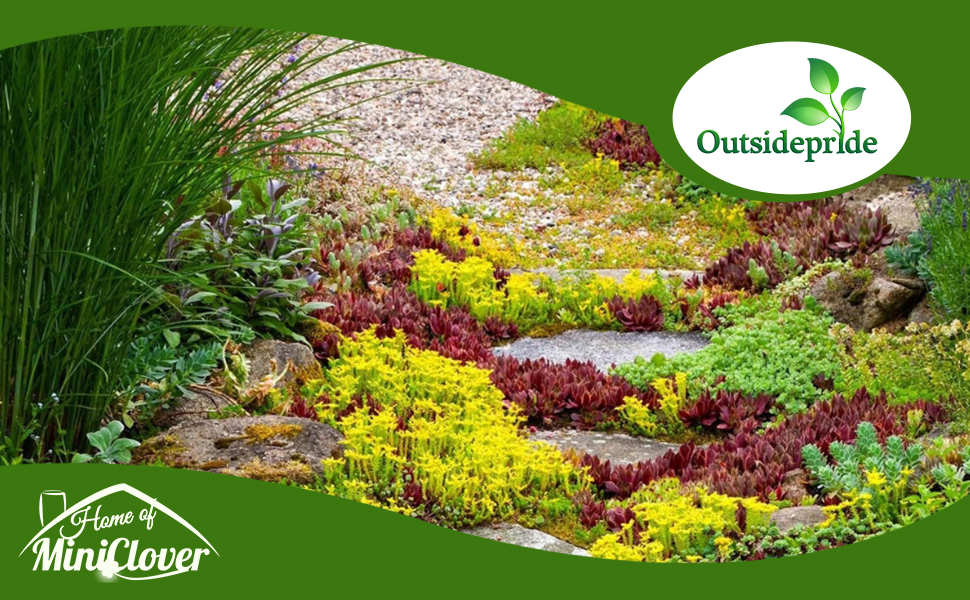
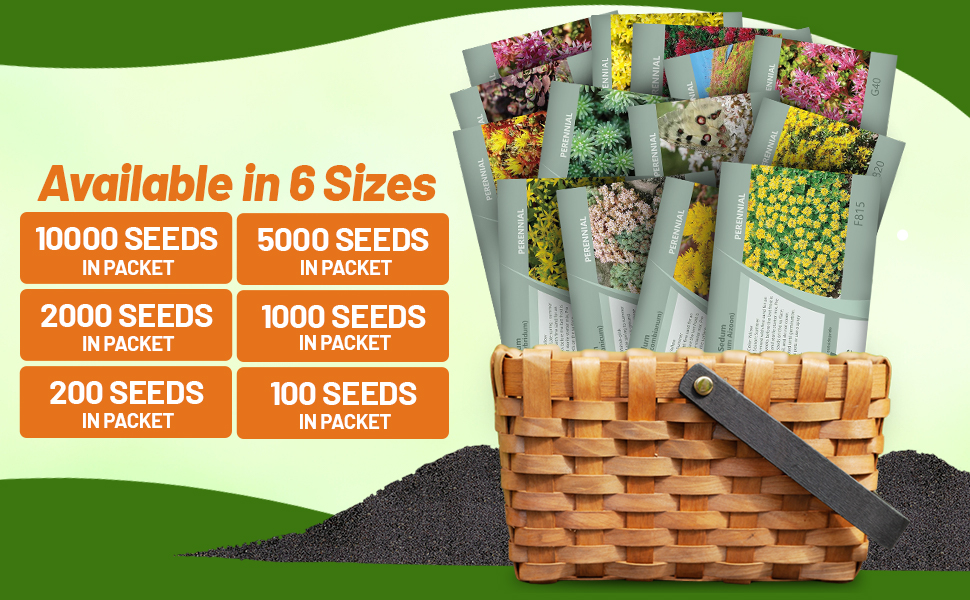
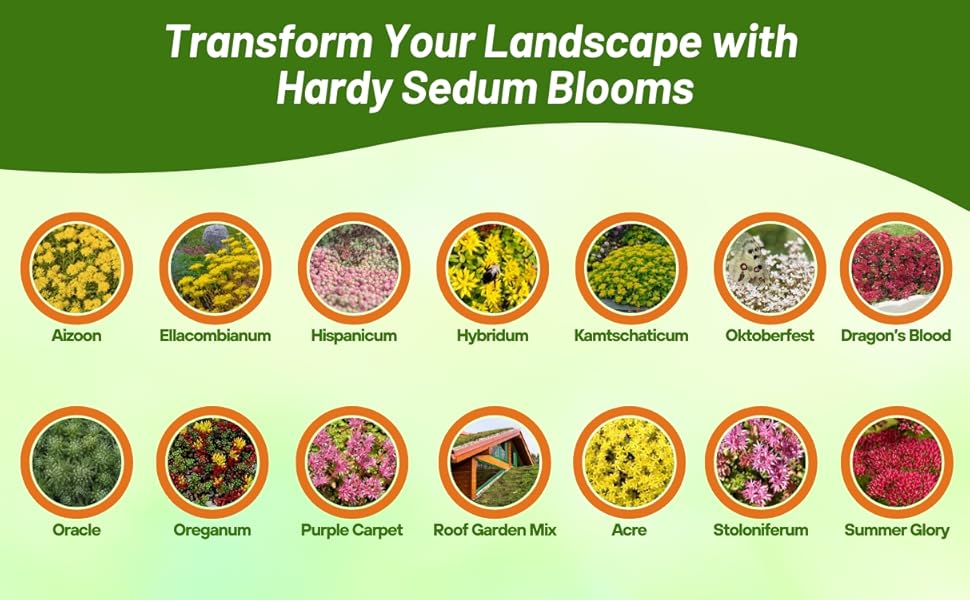
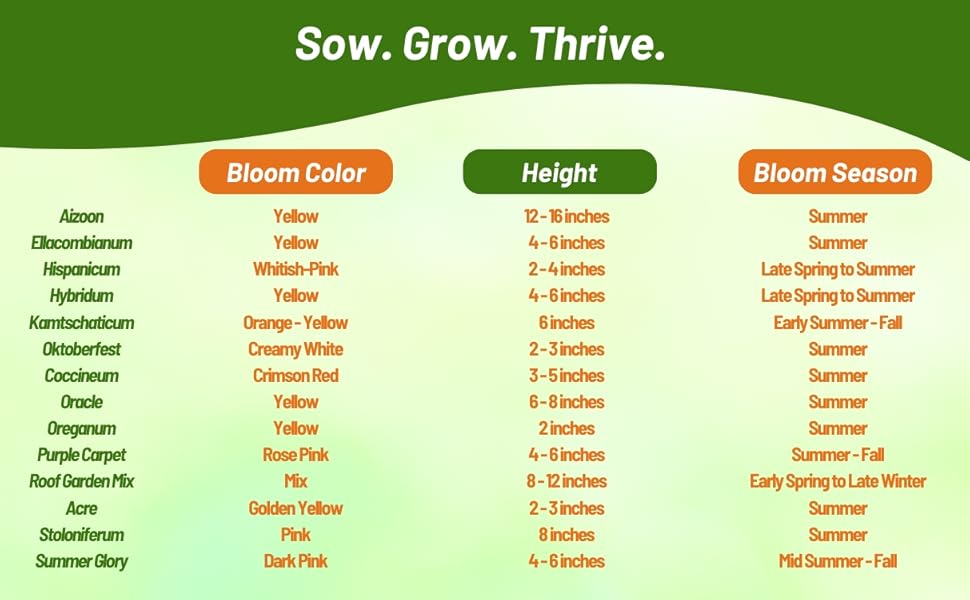

Sedum (Spurium Coccineum) - Grow Sedum Dragon's Blood seeds for an easy-to-grow herbaceous perennial ground cover which can be grown in a container or used in mass plantings. Sedum ground cover plants are exceptionally tolerant of heat and drought and also tolerate to cold and humidity.
Common Questions
Will sedum attract pollinators to my gardens?
Yes, these are a great choice to attract pollinators such as butterflies to your garden.
Do I need to deadhead my plants?
No, sedum does not need any deadheading.
Do I need to prune my plants in the fall?
Yes, cutting back plants after flowering helps to maintain a tidy appearance and encourage bushier, studier growth.
Do I need to fertilize my sedum plants?
No, sedum does not need supplemental fertilization. Plants prefer nutrient poor soil and can become weak and leggy in soil that is too rich.
Can I grow in containers?
Yes, sedum does well in containers as long as you provide excellent drainage.
Planting Directions
TEMPERATURE
68 - 72F
AVERAGE GERM TIME
14 - 28 days
LIGHT REQUIRED
Yes
DEPTH
Do not cover the seed but press into the soil
SOWING RATE
Approximately 5000 seeds cover 100 square feet
MOISTURE
Keep seeds moist until germination
PLANT SPACING
12 inches
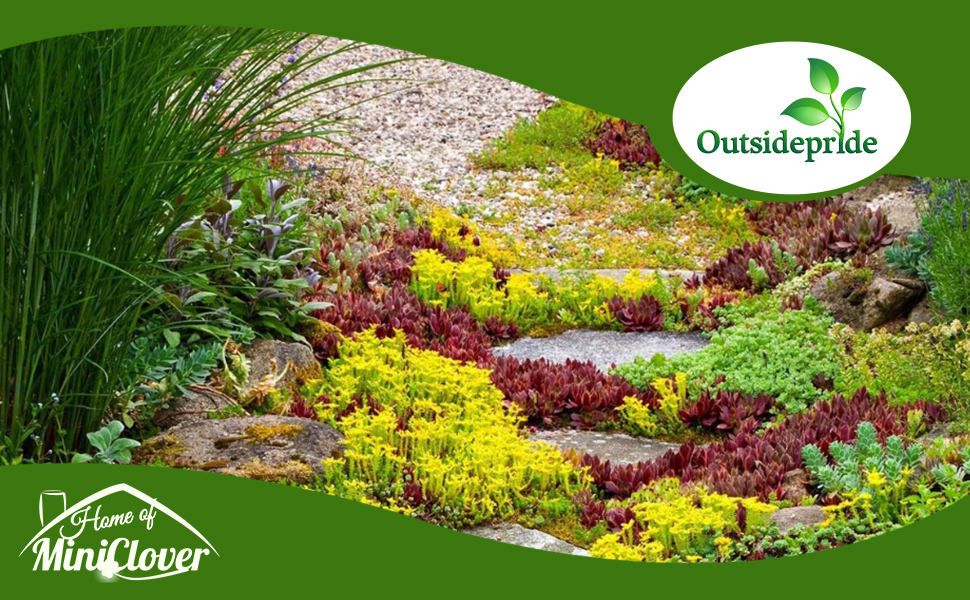
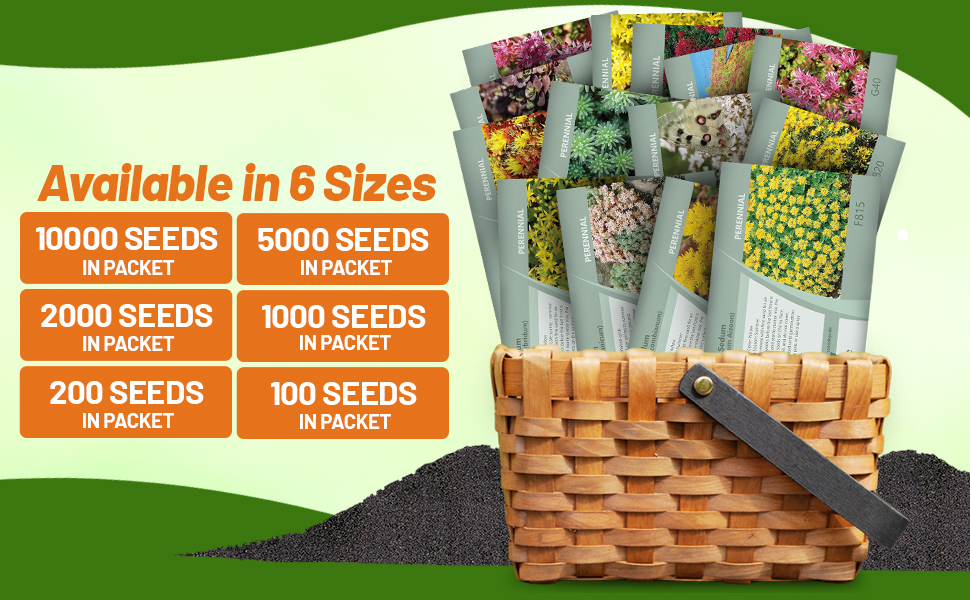
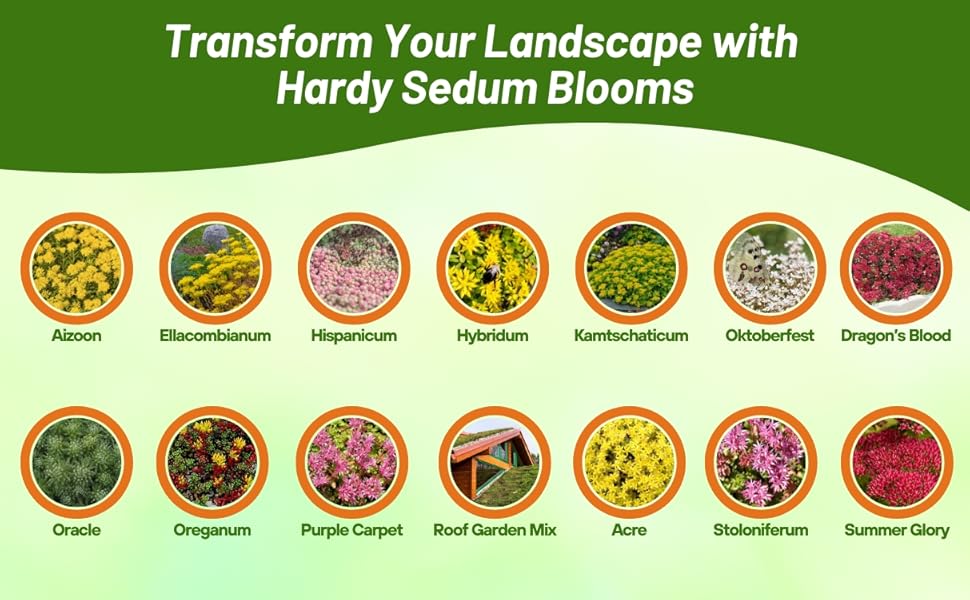
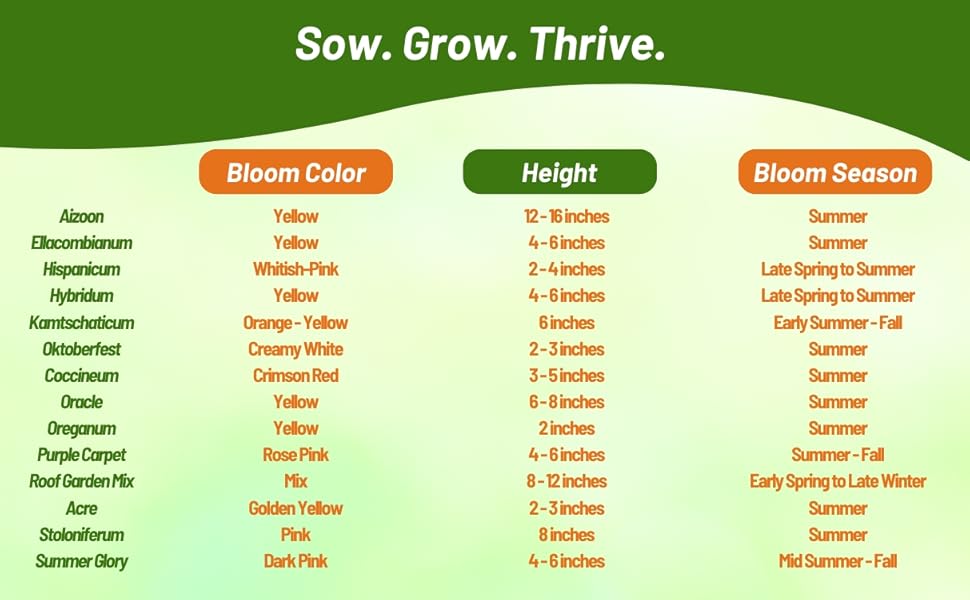
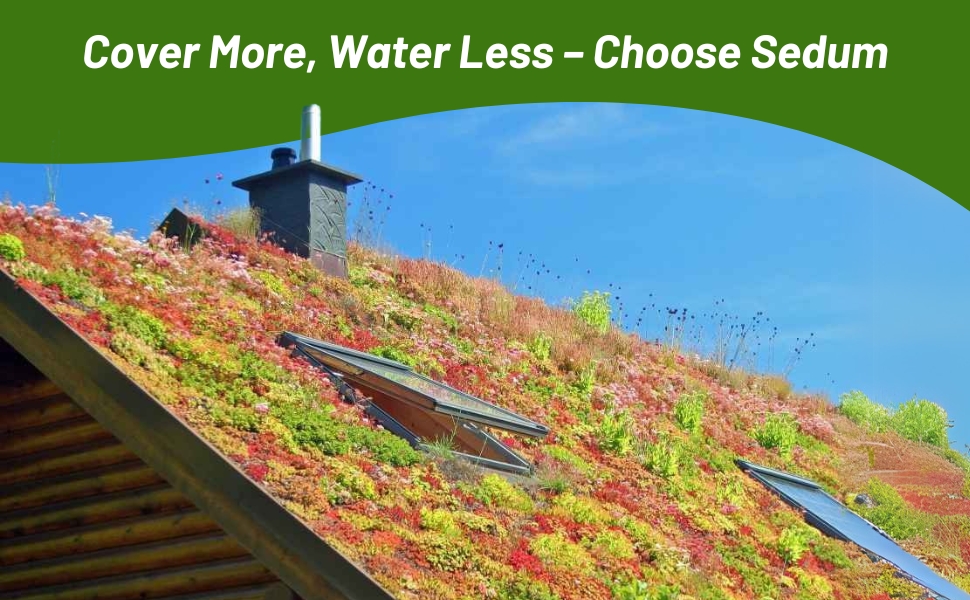
Sedum (Sedum Acre) - Start Sedum Acre seeds to grow an excellent performing drought tolerant ground cover commonly known as Stonecrop. Yellow Stonecrop ground cover plants form a brilliant, intense golden yellow carpet that will rapidly spread and fill in, giving you ground cover over a large area in a very short time perfect for xeriscaping. It is a perennial plant native to Europe but also naturalized in North America.
Common Questions
Will sedum attract pollinators to my gardens?
Yes, these are a great choice to attract pollinators such as butterflies to your garden.
Do I need to deadhead my plants?
No, sedum does not need any deadheading.
Do I need to prune my plants in the fall?
Yes, cutting back plants after flowering helps to maintain a tidy appearance and encourage bushier, studier growth.
Do I need to fertilize my sedum plants?
No, sedum does not need supplemental fertilization. Plants prefer nutrient poor soil and can become weak and leggy in soil that is too rich.
Can I grow in containers?
Yes, sedum does well in containers as long as you provide excellent drainage.
Planting Directions
TEMPERATURE
68 - 70F
AVERAGE GERM TIME
14 - 21 days
LIGHT REQUIRED
Yes
DEPTH
Do not cover the seed but press into the soil
SOWING RATE
Approximately 5000 seeds cover 100 square feet.
MOISTURE
Keep seeds moist until germination
PLANT SPACING
10 - 14 inches
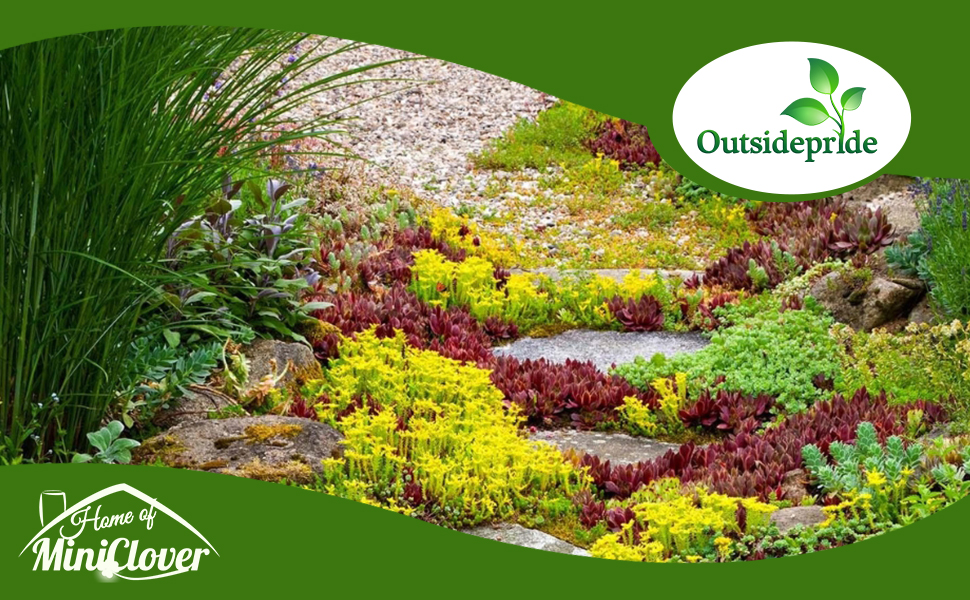
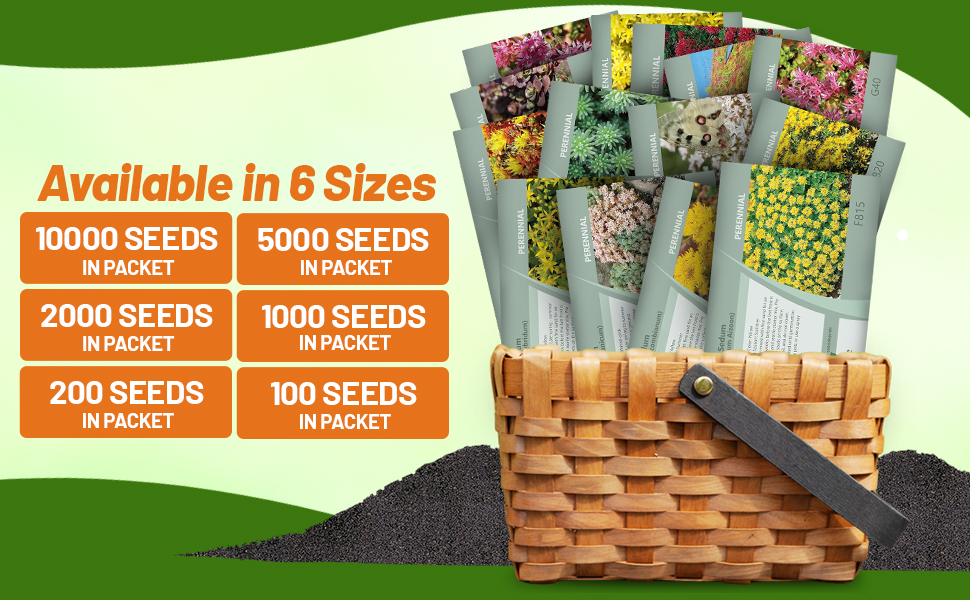
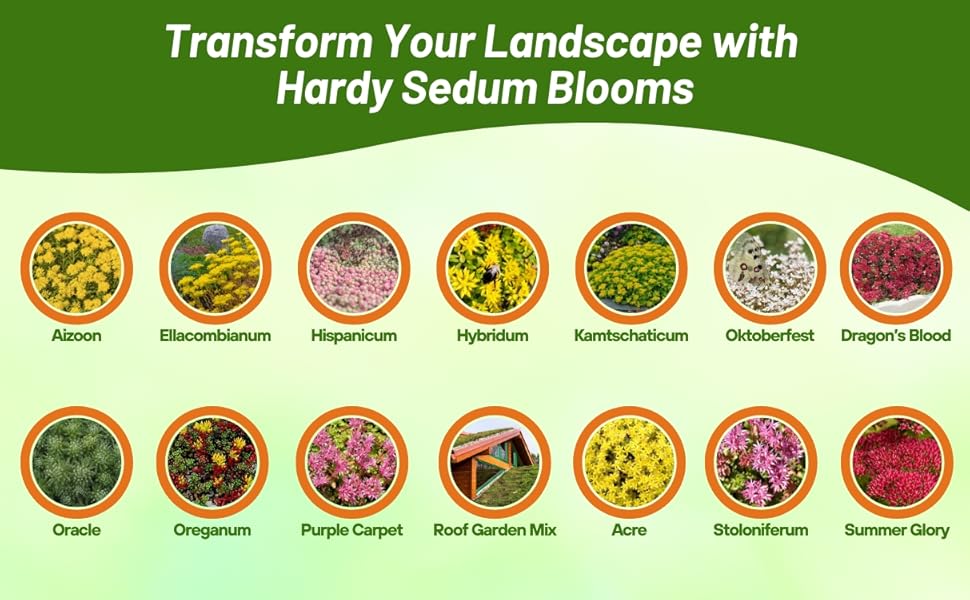
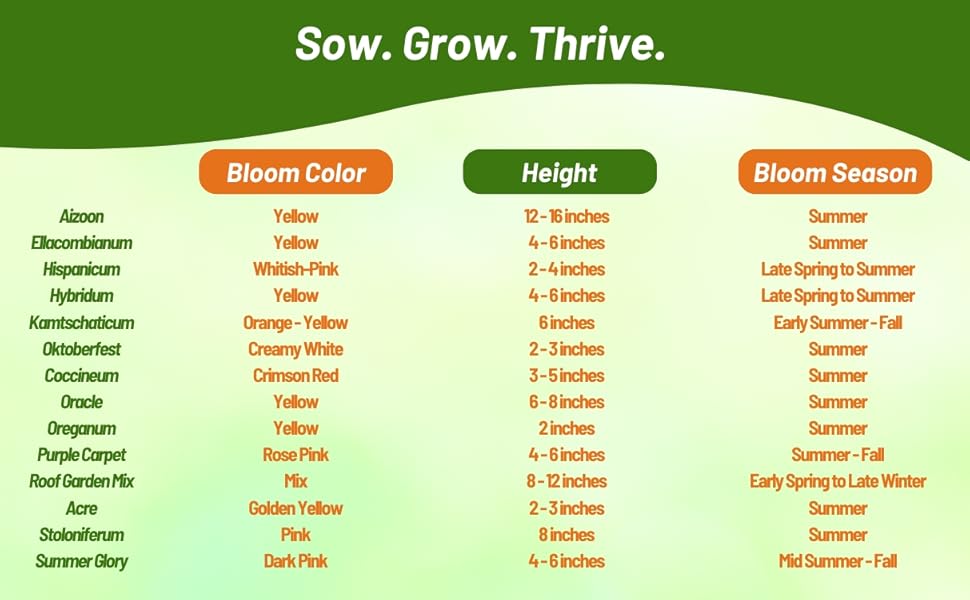
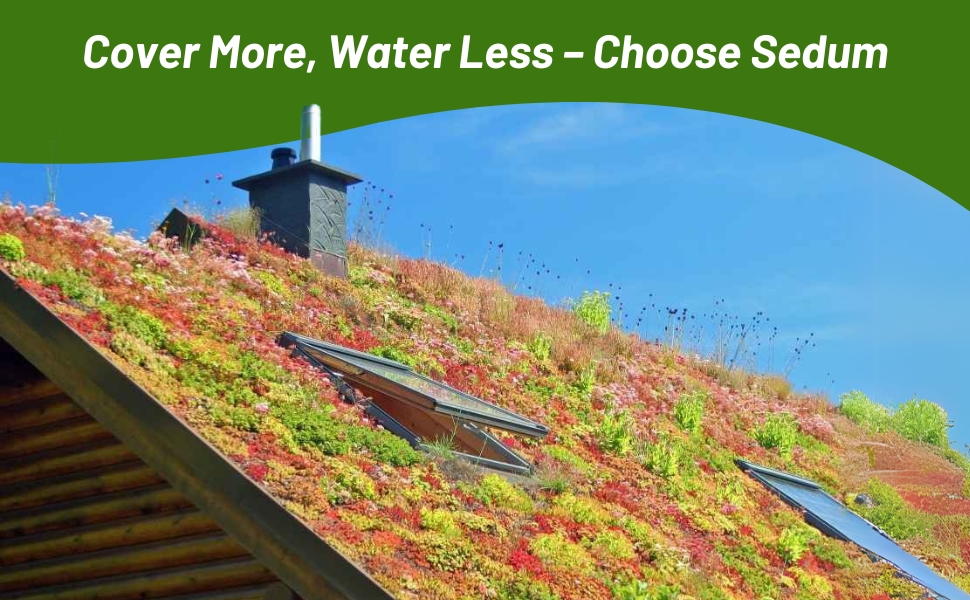
Sedum (Spurium Coccineum Purple Carpet) - Edge your walkways with these wonderful ground cover plants. Easy-to-grow from Sedum seeds, this perennial is a versatile ground cover for xeriscape rock gardens, planting in rock walls, around stones, green roofs, flower beds, or containers. This Sedum Purple Carpet has deep rose pink flowering clusters that will bloom from mid-summer until fall. Sedum Spurium Coccineum has very narrow paddle-shaped leaves that spiral around and form dense mats. The foliage may turn a brownish-red color in the autumn in full sun. Drought tolerant Sedum Stonecrop plants forms a thick ground cover even the first year that is is grown from ground cover seeds.
Sedum ground cover plants prefers well-drained, gritty soils. It will flower best if placed in full sun locations although it will grow in partial shade. These are very tiny seeds which should be mixed with fine sand for an even sowing. Sow Sedum ground cover seeds indoors 6 - 8 weeks before the last frost is expected. Use small pots or flats and sterile starter mix. Pre-moisten the starter mix and sow Sedum seeds, only press the seed into the moistened soil, and do not cover the Sedum seed. Keep the Stonecrop seeds moist but not saturated until they germinate. If seeds do not germinate, a cold period is recommended. Place tray or pots into the refrigerator for 1 - 2 weeds, and then repeat the warm temperature again. Germination can be erratic.
Common Questions
Will sedum attract pollinators to my gardens?
Yes, these are a great choice to attract pollinators such as butterflies to your garden.
Do I need to deadhead my plants?
No, sedum does not need any deadheading.
Do I need to prune my plants in the fall?
Yes, cutting back plants after flowering helps to maintain a tidy appearance and encourage bushier, studier growth.
Do I need to fertilize my sedum plants?
No, sedum does not need supplemental fertilization. Plants prefer nutrient poor soil and can become weak and leggy in soil that is too rich.
Can I grow in containers?
Yes, sedum does well in containers as long as you provide excellent drainage.
Planting Directions
TEMPERATURE
68 - 70F
AVERAGE GERM TIME
14 - 28 days
LIGHT REQUIRED
Yes
DEPTH
Do not cover the seed but press into the soil
SOWING RATE
Approximately 1000 seeds covers 20 square feet.
MOISTURE
Keep seeds moist until germination
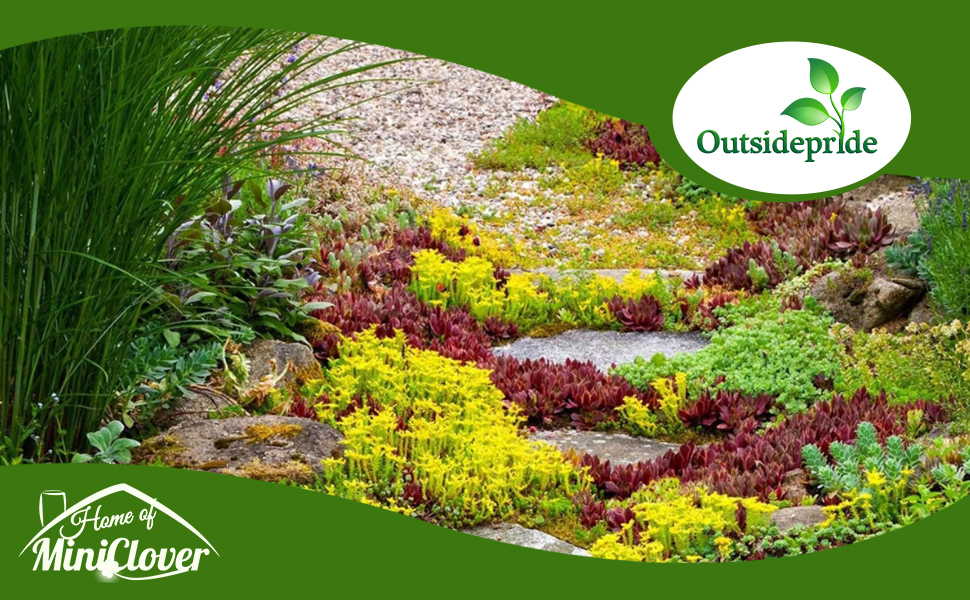
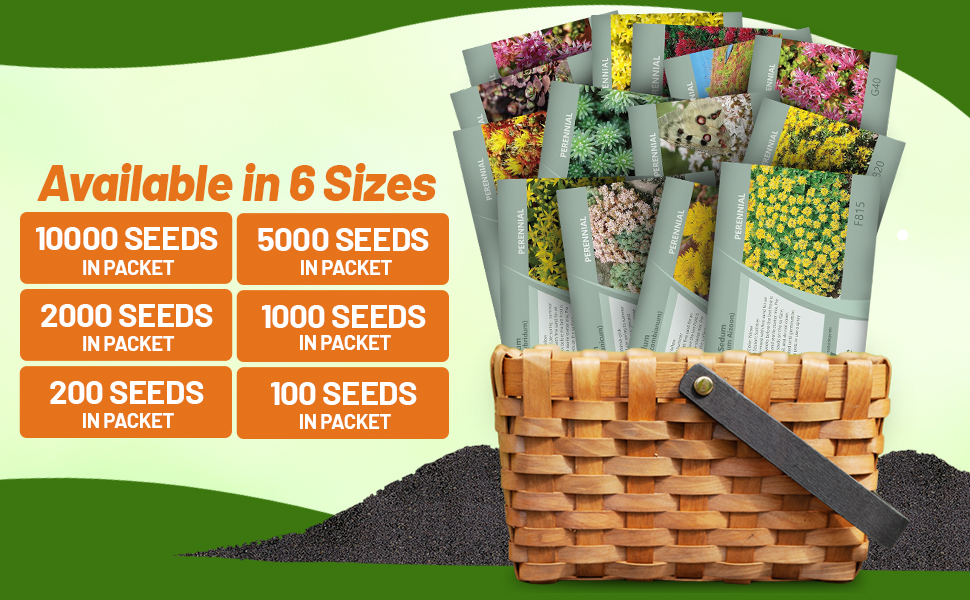
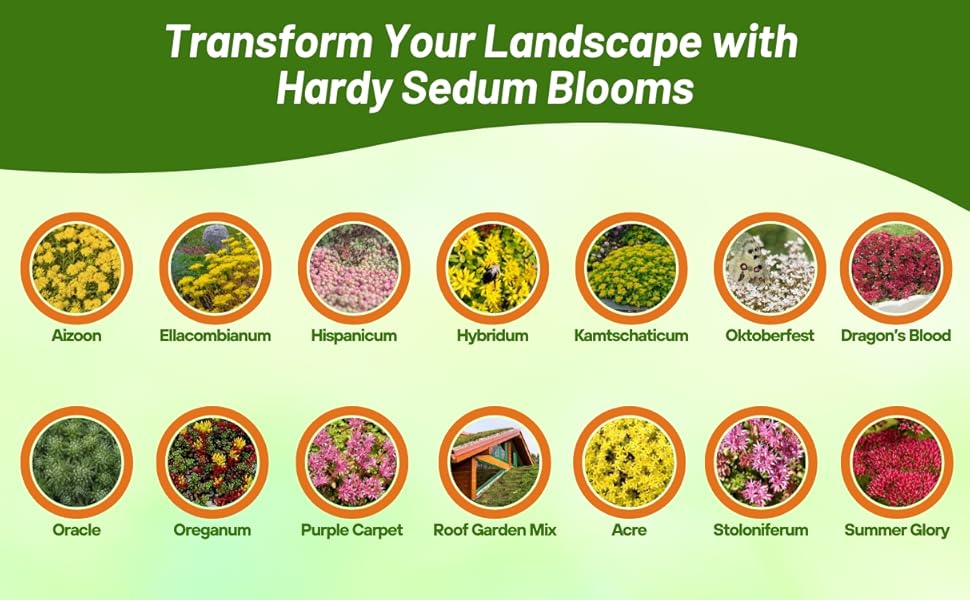
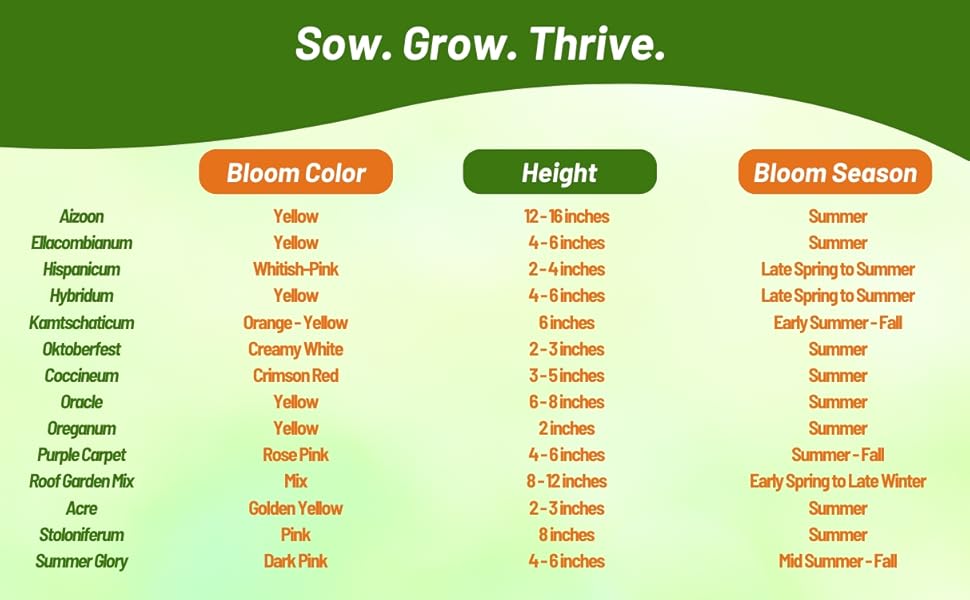
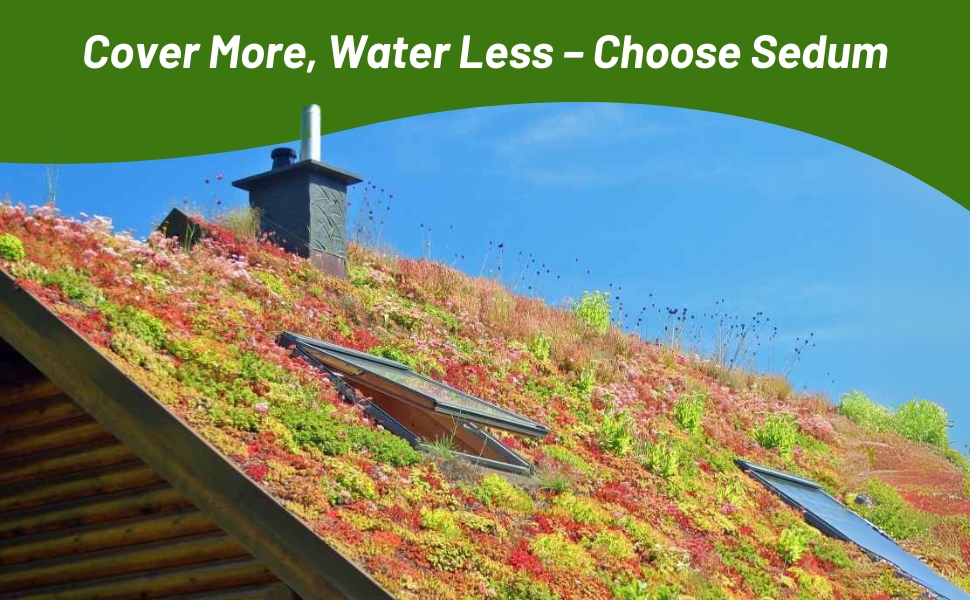
Sedum (Roof Garden Mix) - Create a green roof with Sedum seeds. Green roofs are becoming more and more popular in both rural and urban locations. They can be installed on flat roofs to roofs with a slope of up to 45 degrees. There are different ways of achieving a living roof. An extensive green roof is particularly low maintenance, generally planted with Sedum drought tolerant succulent plants and is designed to look after itself for most of the year. One of the reasons green roofs are becoming so popular is that they offer environmental benefits. Green roof seeds are easy to establish and with the increasing concern about the impact our development of the planet is having on the worldwide environment and the calling for sustainable development, green roofs offer a number of benefits over more traditional forms of roofing, helping to meet sustainable development objectives. Green roofs with sedum can:
Alleviate Flooding
Following a heavy rainfall a green roof will initially retain more rain than a conventional roof. This minimizes the initial heavy runoff, which can cause localized flooding and put pressure on the sewage system. The remaining water then drains off more slowly, allowing more rain to remain in the natural water cycle and less in the sewage system.
Noise Reduction
The soft layer of sedum blanket growing on a green roof has the affect of absorbing sound, as opposed to hard conventional roofs which can reflect it. In an already noisy urban environment this is certainly beneficial. The same layer improves the buildings sound insulation properties, reducing sound pollution within the building.
Thermal Insulation
The addition of a green roof layer to a property increases its thermal insulation properties, making it warmer in winter, cooler in summer and reducing energy costs.
Natural Habitat for Animals and Plants
Green roofs can help compensate for the loss of green surfaces, sacrificed to building developments. This helps to provide an environment for the development of wildlife, especially bird, plant and insect life, increasing the biodiversity in our towns and cities.
Improving Building Aesthetics
The clever use of a green roof can help a large and small buildings blend into a surrounding green landscape, minimizing the impact it has on the immediate environment. Green roofs can be used to soften ugly flat roofs on extensions, garages, sheds etc. helping them blend more easily into their surrounding environment. Where a building is located in a more urban landscape, the addition of a green roof can introduce a very welcome green interlude in a heavily built up area, where green spaces are few and far between, substituting in some way for the loss of a previous greener landscape.
Perennial Sedum plants have been one of the best choices for green roofs due to the fact that it is an extremely adaptable plant. Its special properties include:
Low Maintenance once established sedum forms a tightly knit drought tolerant sedum carpet, which allows little room for the development of weeds and can be left largely unattended. This makes it perfect for use on sedum roofs.
Low Growing sedum is a low growing plant, which generally reaches a height of 2 inches to 5 inches (up to 12 inches when in flower). It does not become overgrown and does not require regular cutting or pruning ideal when used on a sedum roof.
Colorful Hues by mixing a number of different varieties of sedum together as in this Sedum Roof Garden Mix, the sedum turf will have a beautiful mix of colors (greens, yellows, reds and purples) and textures. As an evergreen it continues to provide a changing display of color throughout the winter months. When used to create a sedum roof it will provide a beautifully changing display throughout the year.
Common Questions
Will sedum attract pollinators to my gardens?
Yes, these are a great choice to attract pollinators such as butterflies to your garden.
Do I need to deadhead my plants?
No, sedum does not need any deadheading.
Do I need to prune my plants in the fall?
Yes, cutting back plants after flowering helps to maintain a tidy appearance and encourage bushier, studier growth.
Do I need to fertilize my sedum plants?
No, sedum does not need supplemental fertilization. Plants prefer nutrient poor soil and can become weak and leggy in soil that is too rich.
Can I grow in containers?
Yes, sedum does well in containers as long as you provide excellent drainage.
Planting Directions
TEMPERATURE
68 - 70F
AVERAGE GERM TIME
14 - 21 days
LIGHT REQUIRED
Yes
DEPTH
Do not cover the seed but press into the soil
SOWING RATE
Approximately 1000 seeds covers 20 square feet.
MOISTURE
Keep seeds moist until germination
PLANT SPACING
12 inches
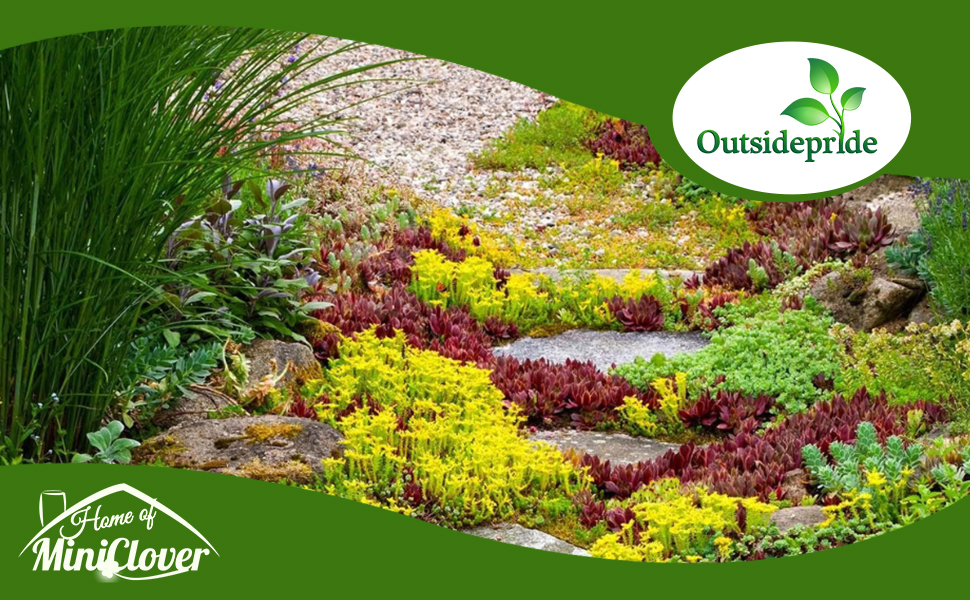
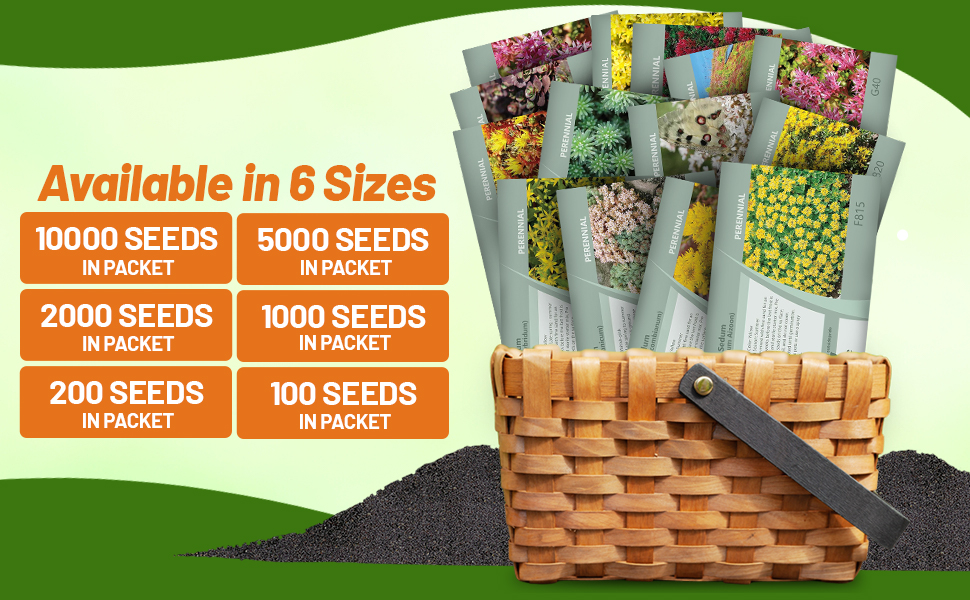
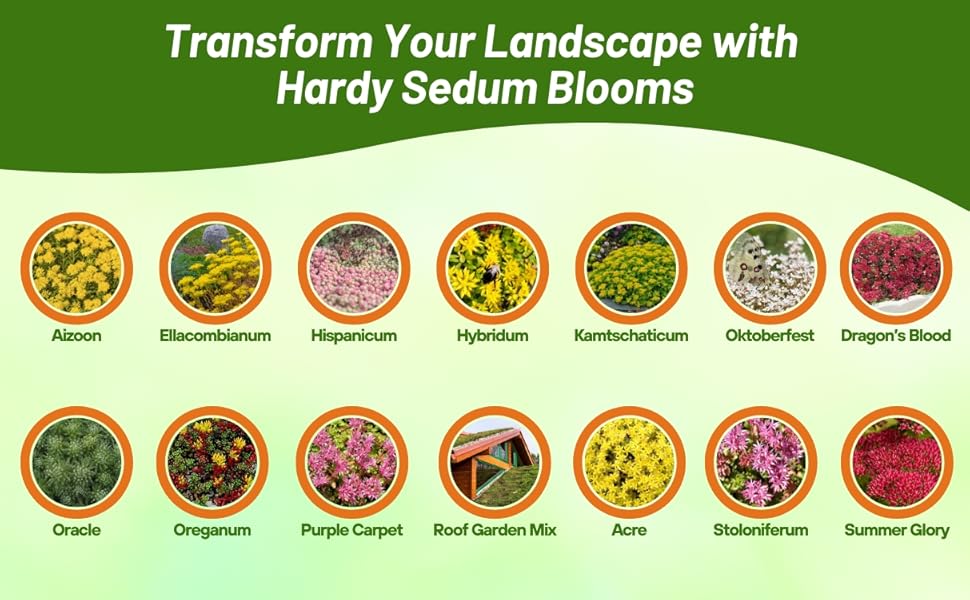
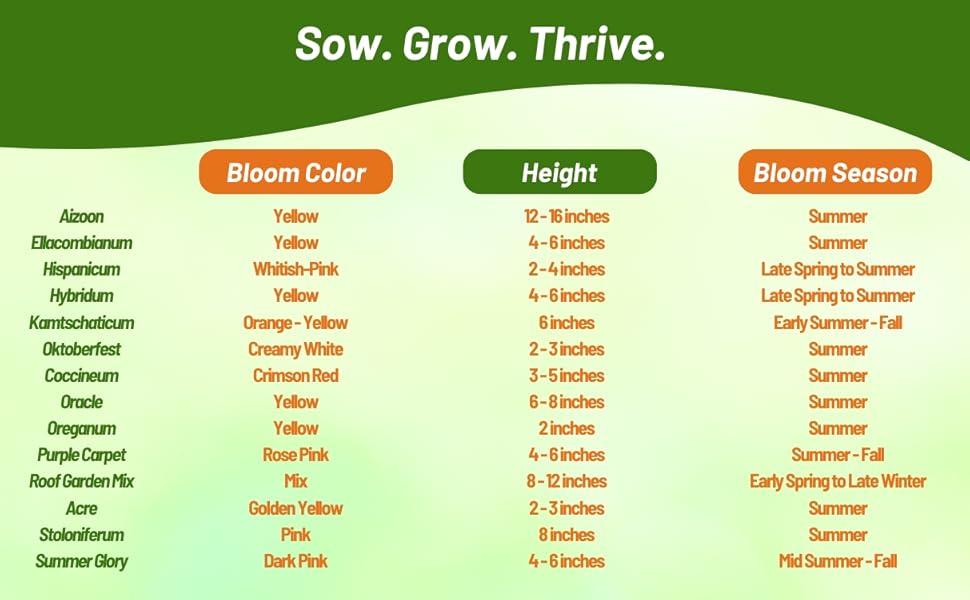
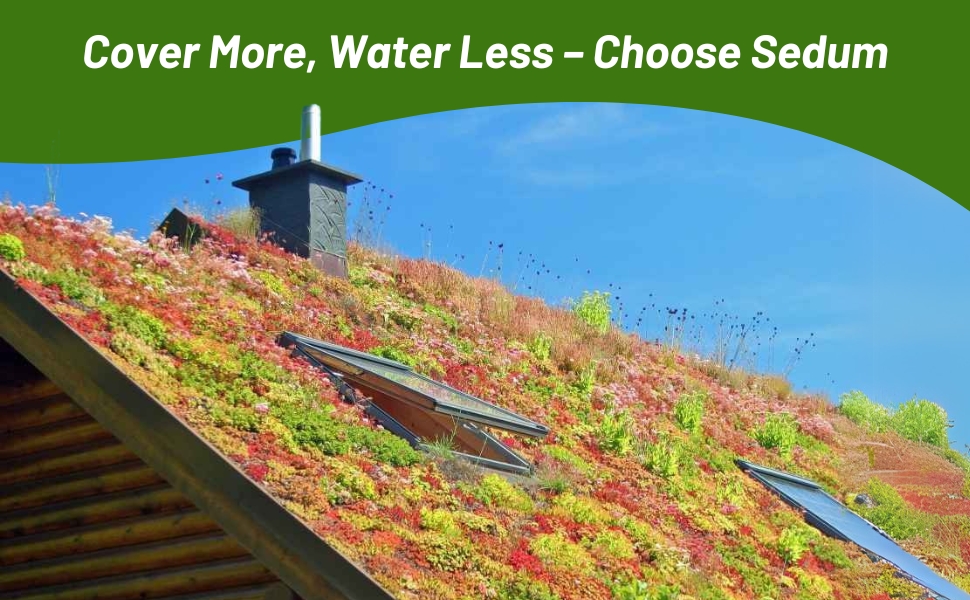
Sedum (Sedum Hybridum) - The perfect drought tolerant ground cover plant for hot dry sites! Sedum hybridum has evergreen foliage that spreads to form a dense mat of scalloped green leaves. In the summer, clusters of tiny star-shaped yellow flowers cover the foliage. The foliage can turn to shades of red and orange in the fall. Sedums are often used in floral design, they can be used for centerpieces, bouquets, boutonnieres, and hair pieces. Plants are drought resistant once established and used for xeriscape landscaping.
Common Questions
Will sedum attract pollinators to my gardens?
Yes, these are a great choice to attract pollinators such as butterflies to your garden.
Do I need to deadhead my plants?
No, sedum does not need any deadheading.
Do I need to prune my plants in the fall?
Yes, cutting back plants after flowering helps to maintain a tidy appearance and encourage bushier, studier growth.
Do I need to fertilize my sedum plants?
No, sedum does not need supplemental fertilization. Plants prefer nutrient poor soil and can become weak and leggy in soil that is too rich.
Can I grow in containers?
Yes, sedum does well in containers as long as you provide excellent drainage.
Planting Directions
TEMPERATURE
68 - 72F
AVERAGE GERM TIME
14 - 28 days
LIGHT REQUIRED
Yes
DEPTH
Do not cover the seed but press into the soil
SOWING RATE
1000 seeds cover 20 square feet
MOISTURE
Keep seeds moist until germination
PLANT SPACING
12 inches
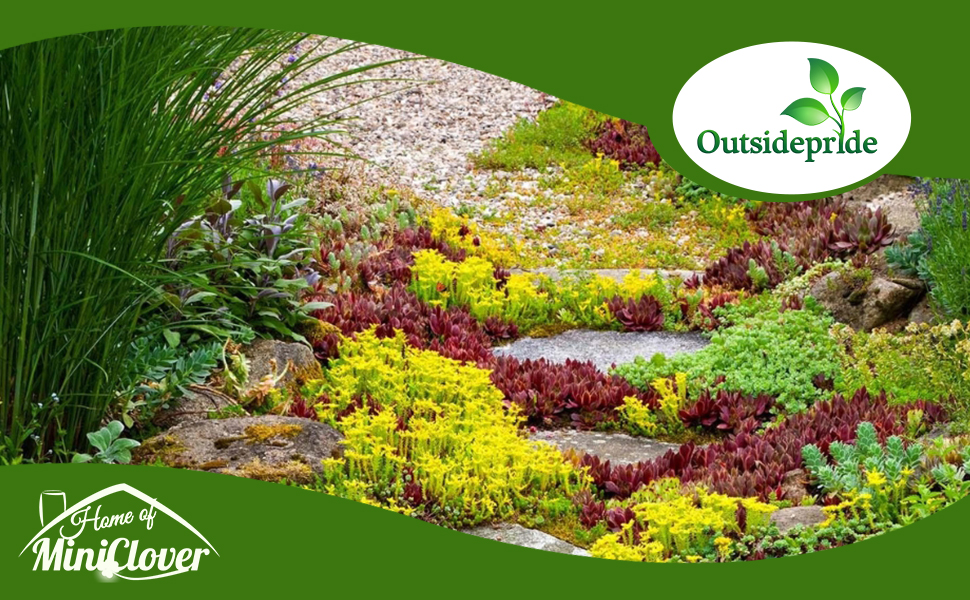
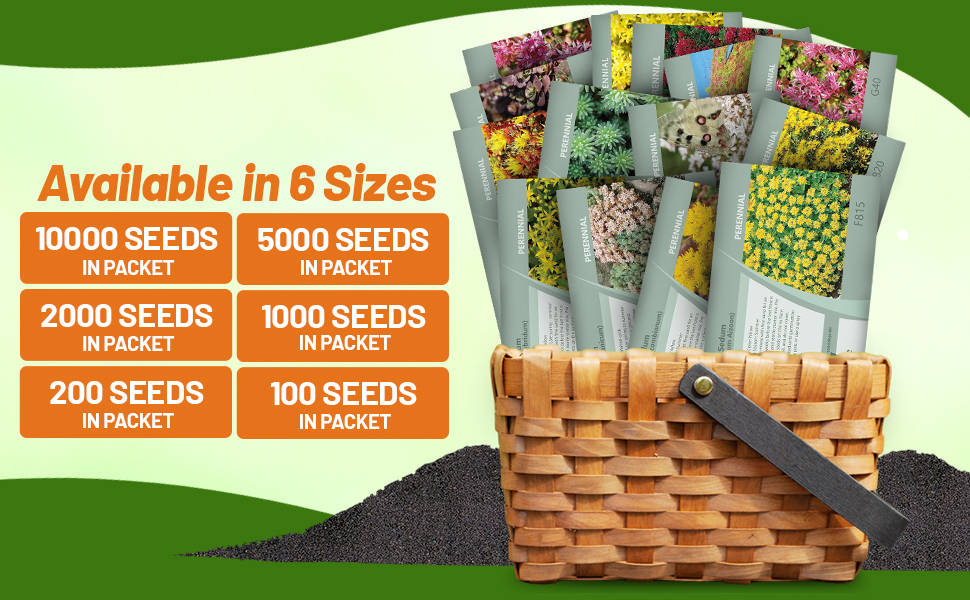
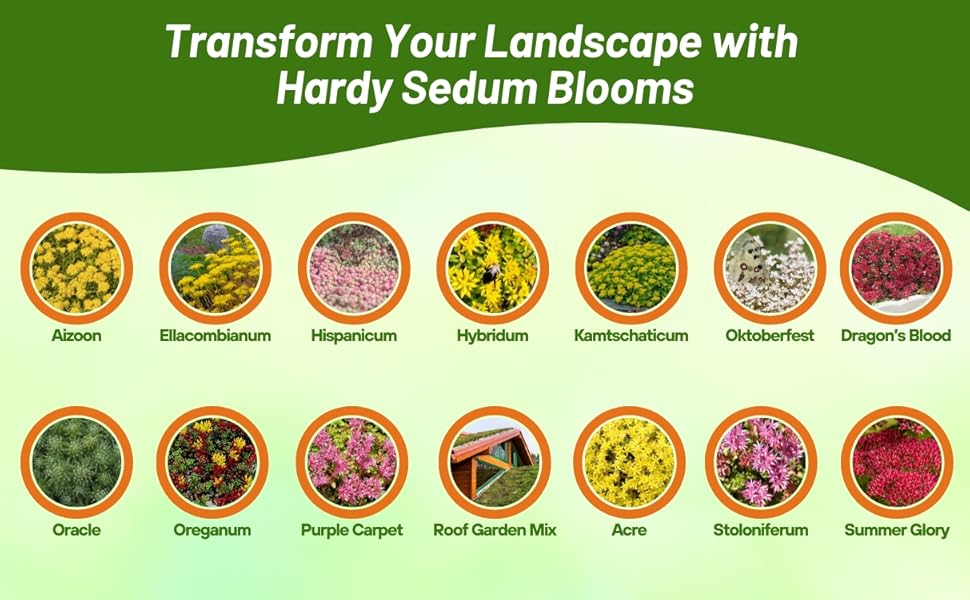


Sedum (Sedum Acre Oktoberfest) - If you want a drought tolerant, low-growing, hardy, creeping selection of Stonecrop, than these Sedum seeds are an excellent choice. Sedum Oktoberfest grows great in hot, dry sites with poor soil. Sedum ground cover plants are a fast-spreading evergreen which forms a low carpet of tiny succulent green leaves, smothered by star-shaped creamy-white flowers all summer long. Due to the fact that Oktoberfest ground cover plant is a fast grower, it is best to keep away from other low, slower growing plants or they may get smothered. Many people even use this Sedum plant as a lawn substitute as it tolerates moderate foot traffic once it is well-established and is perfect for xeriscape landscapes.
Growing Stonecrop seed is fun and rewarding! Sedum has tiny seeds which should be mixed with fine sand for an even sowing. Sow Sedum Oktoberfest seeds indoors 6 - 8 weeks before the last frost is expected. Use small pots or flats and sterile starter mix. Pre-moisten the starter mix and sow Sedum seeds on the surface. Press the seed into the moistened soil, and do not cover the Stonecrop seeds. Keep the seeds moist but not saturated until they germinate. Water from the underside of the pots or use a spray bottle and lightly mist the seeds.
Common Questions
Will sedum attract pollinators to my gardens?
Yes, these are a great choice to attract pollinators such as butterflies to your garden.
Do I need to deadhead my plants?
No, sedum does not need any deadheading.
Do I need to prune my plants in the fall?
Yes, cutting back plants after flowering helps to maintain a tidy appearance and encourage bushier, studier growth.
Do I need to fertilize my sedum plants?
No, sedum does not need supplemental fertilization. Plants prefer nutrient poor soil and can become weak and leggy in soil that is too rich.
Can I grow in containers?
Yes, sedum does well in containers as long as you provide excellent drainage.
Planting Directions
TEMPERATURE
68 - 72F
AVERAGE GERM TIME
14 - 28 days
LIGHT REQUIRED
Yes
DEPTH
Do not cover the seed but press into the soil
SOWING RATE
1000 seeds covers approximately 20 square feet
MOISTURE
Keep seeds moist until germination
PLANT SPACING
12 inches
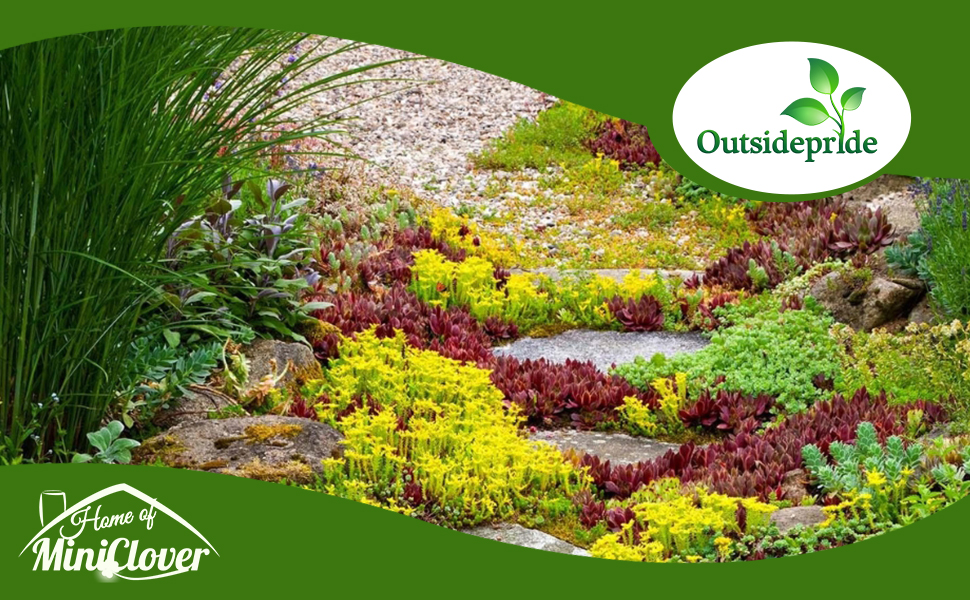
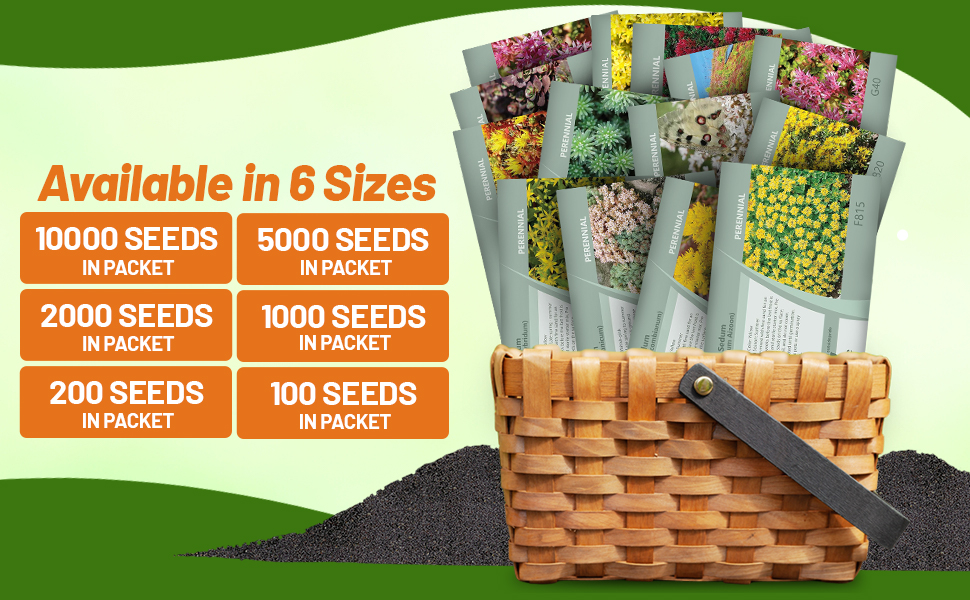
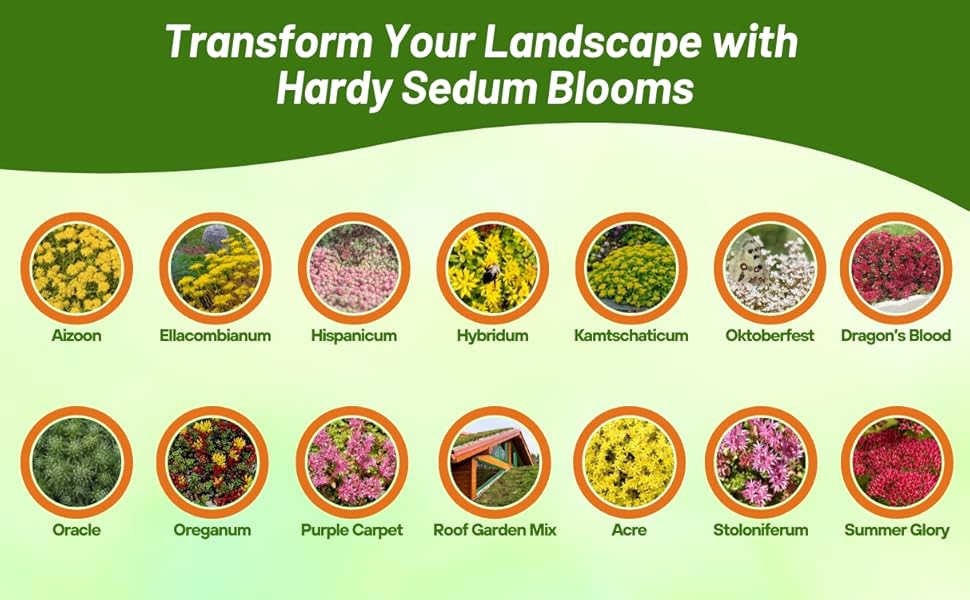

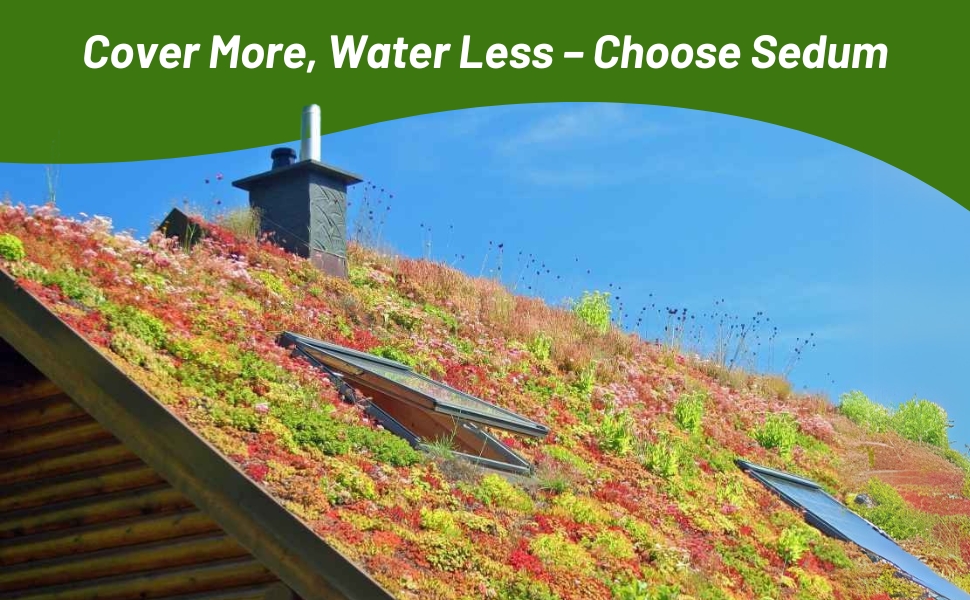
Sedum (Sedum Aizoon) - Start Sedum Aizoon seeds for this medium-sized perennial Sedum that is versatile and a great addition to your xeriscape beds and borders. Sedum Aizoon has a unique foliage that is adorned with bright yellow flowers. The blooms are large in comparison to the foliage and very showy. Sedum succulent plants do well leaning over the edge of rock walls, raised beds, rock gardens, xeriscape gardening, or in mass plantings where water conservation is desired.
This Sedum ground cover plant offers continuous garden performance. Even when it is not flowering it has an attractive foliage that adds interest to any sunny landscape. This variety of Sedum Stonecrop is commonly known as Fei Cai in some parts of the world.
Sedum has tiny seeds which should be mixed with fine for an even sowing. Sow Sedum seeds indoors 6 - 8 weeks before the last frost is expected. Use small pots or flats and sterile starter mix. Pre-moisten the starter mix and sow Sedum Aizoon seeds on the surface. Press the seed into the moistened soil, and do not cover it. Keep the ground cover seeds moist but not saturated until they germinate. Water from the underside of the pots or use a spray bottle and lightly mist the seeds.
Common Questions
Will sedum attract pollinators to my gardens?
Yes, these are a great choice to attract pollinators such as butterflies to your garden.
Do I need to deadhead my plants?
No, sedum does not need any deadheading.
Do I need to prune my plants in the fall?
Yes, cutting back plants after flowering helps to maintain a tidy appearance and encourage bushier, studier growth.
Do I need to fertilize my sedum plants?
No, sedum does not need supplemental fertilization. Plants prefer nutrient poor soil and can become weak and leggy in soil that is too rich.
Can I grow in containers?
Yes, sedum does well in containers as long as you provide excellent drainage.
Planting Directions
TEMPERATURE
68 - 72F
AVERAGE GERM TIME
14 - 28 days
LIGHT REQUIRED
Yes
DEPTH
Do not cover the seed but press into the soil
SOWING RATE
1000 seeds covers approximately 20 square feet
MOISTURE
Keep seeds moist until germination
PLANT SPACING
8 inches
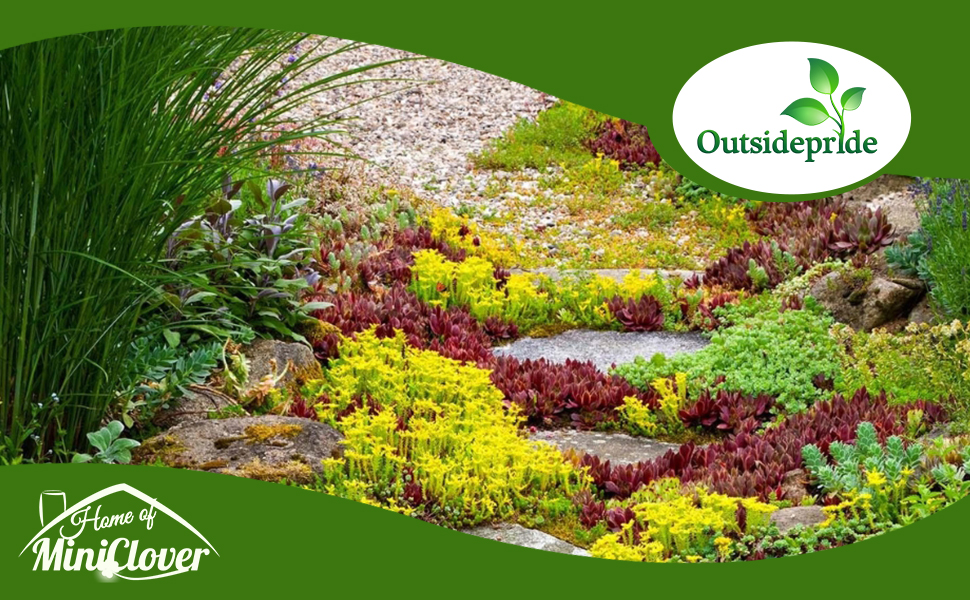
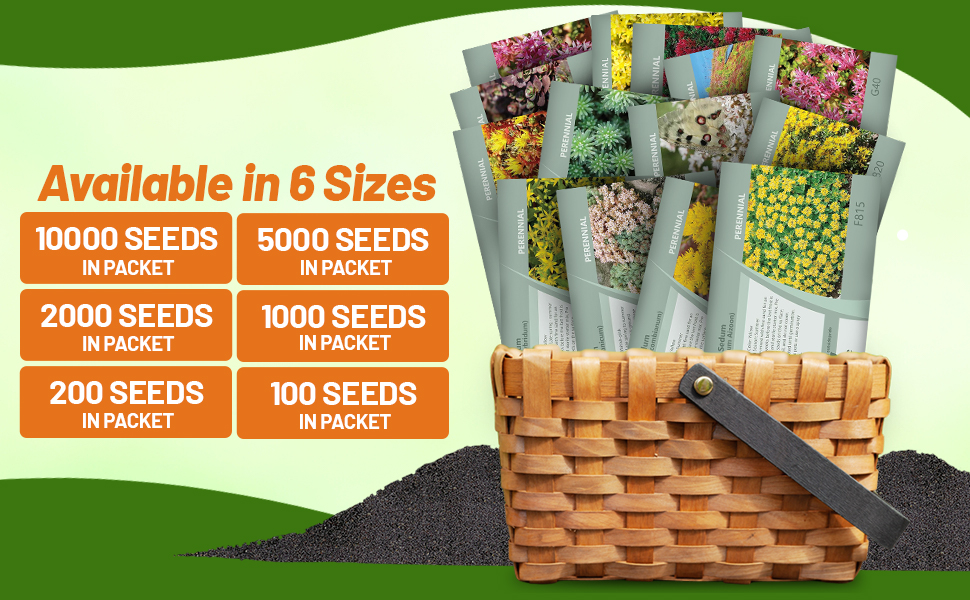
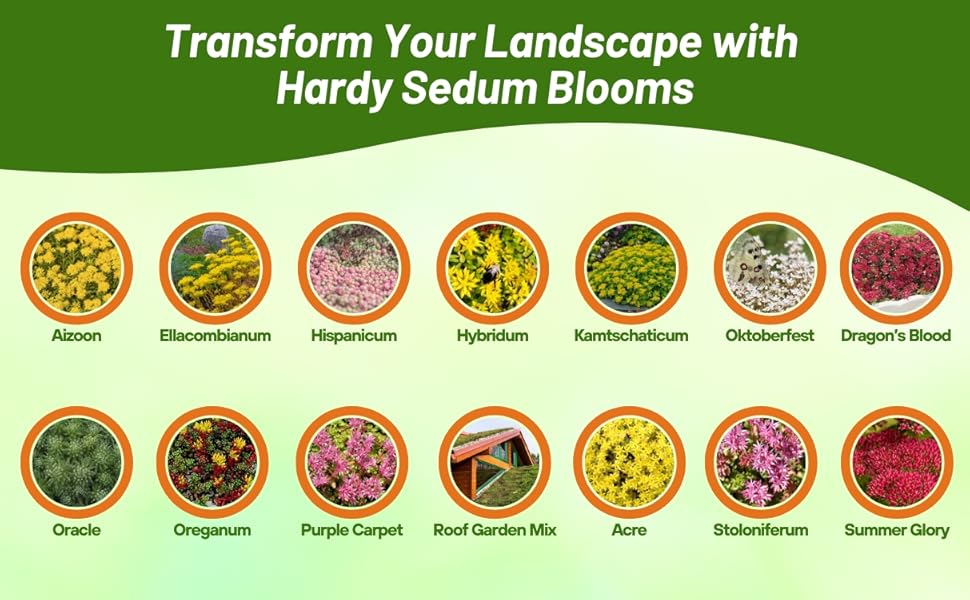
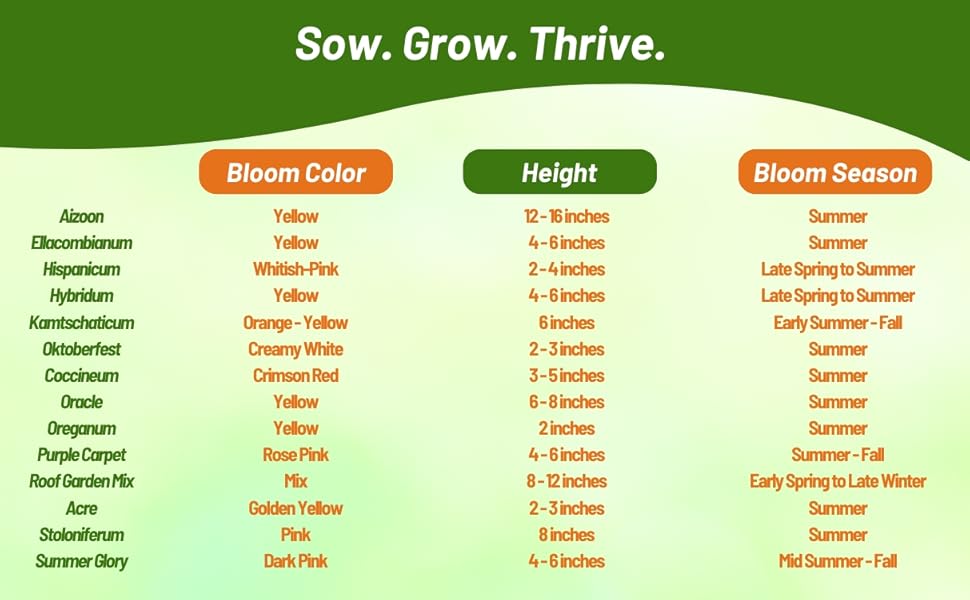
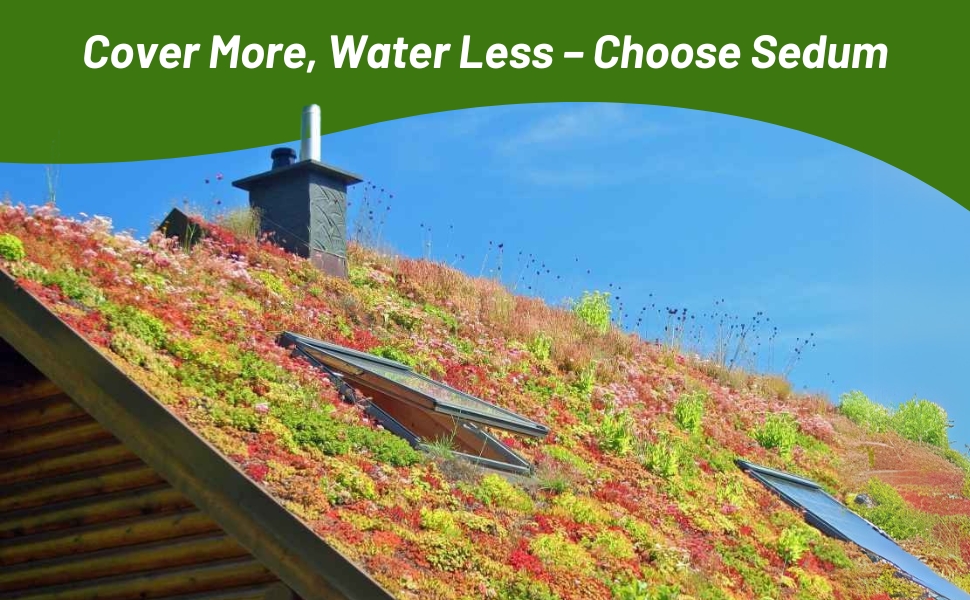
Sedum (Sedum Ellacombianum) - This is one of the best selling perennial Sedum ground covers by both homeowners and landscapers alike. Grow Sedum Ellacombianum seeds for virtually a maintenance free, drought proof ground cover plant. Yellow Stonecrop Sedum will add distinction and beauty to any flower garden, rock garden, container, or planter box. These Sedum ground cover plants form a luxurious mound of dark green leaves that stay attractive 3 seasons of the year. As soon as summer arrives, hundreds of sunny yellow flowers will cover the attractive foliage. When Autumn approaches, the foliage takes on a soft pinkish hue.
Sedum succulent plants are drought tolerant. They thrive in sandy and even rocky soils. To keep this ground cover in its optimum health, Sedum Ellacombianum care requires good drainage, and soil may need to be amended with organic matter if it tends to be heavy. Stonecrop Sedum is an excellent ground cover plant, particularly for hot, dry sites with poor soil making it perfect for xeriscaping. This variety forms a flat, dense mound of green leaves.
Sedum has tiny seeds which should be mixed with fine sand for an even sowing. Sow Sedum seeds indoors 6 - 8 weeks before the last frost is expected. Use small pots or flats and sterile starter mix. Pre-moisten the starter mix and sow Sedum ground cover seeds on the surface. Press the seed into the moistened soil, and do not cover it. Keep the seeds moist but not saturated until they germinate. Water from the underside of the pots or use a spray bottle and lightly mist the seeds.
Common Questions
Will sedum attract pollinators to my gardens?
Yes, these are a great choice to attract pollinators such as butterflies to your garden.
Do I need to deadhead my plants?
No, sedum does not need any deadheading.
Do I need to prune my plants in the fall?
Yes, cutting back plants after flowering helps to maintain a tidy appearance and encourage bushier, studier growth.
Do I need to fertilize my sedum plants?
No, sedum does not need supplemental fertilization. Plants prefer nutrient poor soil and can become weak and leggy in soil that is too rich.
Can I grow in containers?
Yes, sedum does well in containers as long as you provide excellent drainage.
















